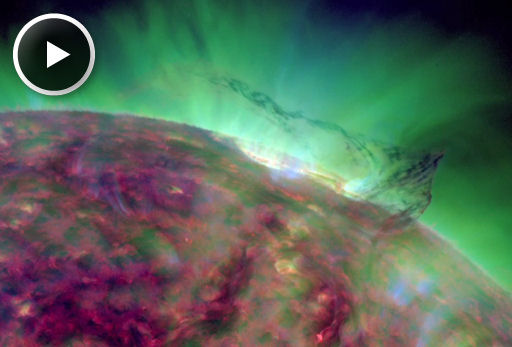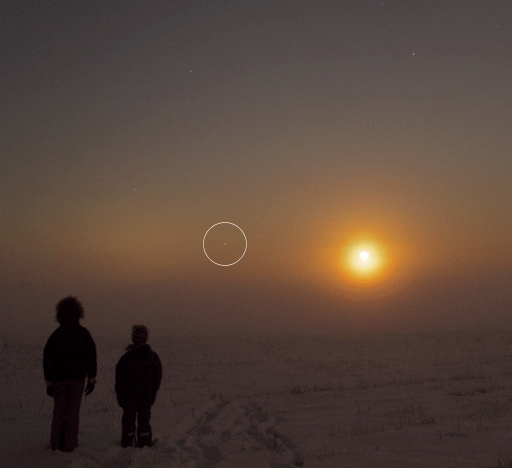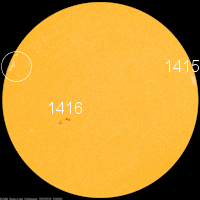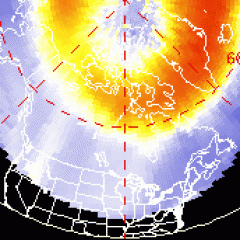AURORA WATCH: NOAA forecasters estimate a 20% chance of minor geomagnetic storms during the next 24 hours as Earth glides through a solar wind stream. Arctic sky watchers should be alert for green things above. Aurora alerts: text, voice.
NORTHEASTERN ERUPTION: Solar activity is picking up. During the late hours of Feb. 9th, a dark magnetic filament winding over the sun's northeastern limb rose up and exploded. NASA's Solar Dynamics Observatory recorded the action:
The eruption hurled a bright coronal mass ejection (CME) away from the sun: SOHO movie. The expanding cloud is not heading for Earth, but in a day or so it might make contact with Venus, which appears to be in the line of fire.
The emergence of a new sunspot at the root of the erupting filament plus the rapid growth of existing sunspot AR1416 could foreshadow more activity in the days ahead. Solar flare alerts: text, voice.
MOON-MARS: Mars is approaching Earth for a close encounter in early March. Already the Red Planet is five times brighter than a 1st-magnitude star. Last night it appeared next to the Moon, where the children of Swedish astrophotographer P-M Hedén saw it beaming through the evening mist:
"It was a very cold evening, but my children decided to come along with me to get a nice view of the Moon and Mars rising over a frozen lake," says Heden. "It was worth standing in the cold mist to see this. Now the children are in front of the stove, warm and nice again."
Meanwhile, Efrain Morales Rivera photographed the Red Planet from his private observatory in of Aguadilla, Puerto Rico. "Cross your eyes to see Mars in 3D," he says. The two images were taken one hour apart. The rotation of Mars during that time provided two points of view necessary for a pseudo-stereo effect: more.

![]()
Solar wind
speed: 451.3 km/sec
density: 0.2 protons/cm3
explanation | more data
Updated: Today at 1436 UT
![]()
X-ray Solar Flares
6-hr max: C1 1212 UT Feb10
24-hr: C1 1212 UT Feb10
explanation | more data
Updated: Today at: 1400 UT
![]()
![]()
![]()
Daily Sun: 10 Feb 12
![]()
![]()
A new sunspot is emerging at the circled location. Credit: SDO/HMI
![]()
![]()
![]()
Sunspot number: 33
What is the sunspot number?
Updated 09 Feb 2012
Spotless Days
Current Stretch: 0 days
2012 total: 0 days (0%)
2011 total: 2 days (<1%)
2010 total: 51 days (14%)
2009 total: 260 days (71%)
Since 2004: 821 days
Typical Solar Min: 486 days
Updated 09 Feb 2012
The Radio Sun
10.7 cm flux: 99 sfu
explanation | more data
Updated 09 Feb 2012
![]()
![]()
![]()
Current Auroral Oval:
![]()
Switch to: Europe, USA, New Zealand, Antarctica
Credit: NOAA/POES
![]()
![]()
![]()
Planetary K-index
Now: Kp= 0 quiet
24-hr max: Kp= 2 quiet
explanation | more data
![]()
Interplanetary Mag. Field
Btotal: 4.1 nT
Bz: 3.6 nT north
explanation | more data
Updated: Today at 1436 UT
![]()
![]()
![]()
Coronal Holes: 09 Feb 12
![]()
![]()
Solar wind flowing from this coronal hole should reach Earth on Feb. 10-11. Credit: SDO/AIA.






